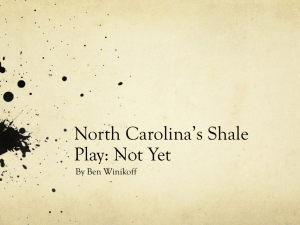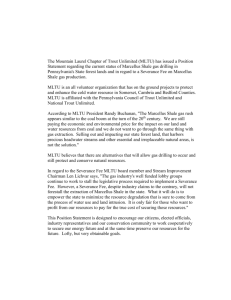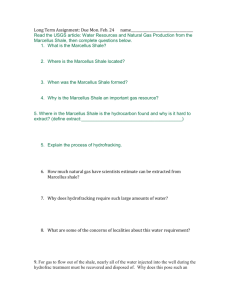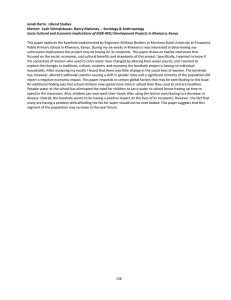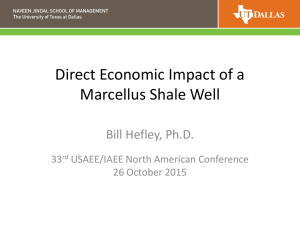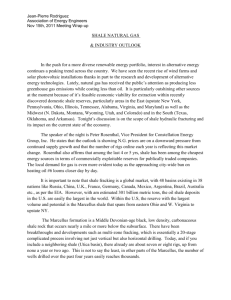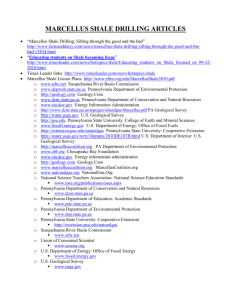A New 3D Structural Modeling Technique Unravels Complex
advertisement
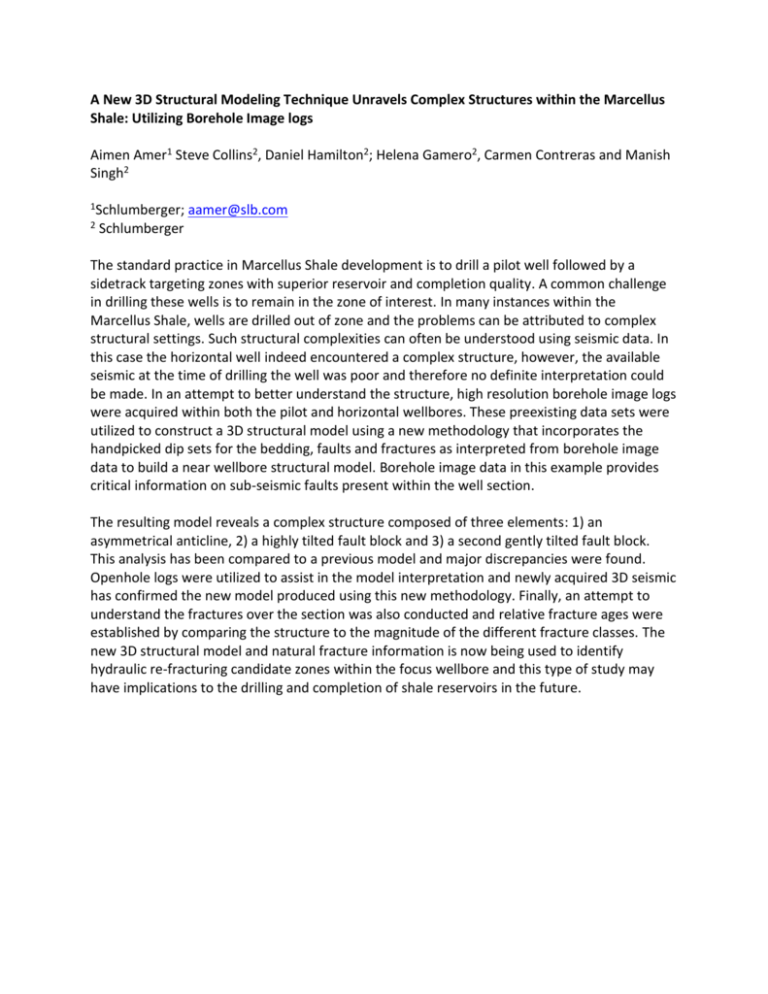
A New 3D Structural Modeling Technique Unravels Complex Structures within the Marcellus Shale: Utilizing Borehole Image logs Aimen Amer1 Steve Collins2, Daniel Hamilton2; Helena Gamero2, Carmen Contreras and Manish Singh2 1Schlumberger; 2 aamer@slb.com Schlumberger The standard practice in Marcellus Shale development is to drill a pilot well followed by a sidetrack targeting zones with superior reservoir and completion quality. A common challenge in drilling these wells is to remain in the zone of interest. In many instances within the Marcellus Shale, wells are drilled out of zone and the problems can be attributed to complex structural settings. Such structural complexities can often be understood using seismic data. In this case the horizontal well indeed encountered a complex structure, however, the available seismic at the time of drilling the well was poor and therefore no definite interpretation could be made. In an attempt to better understand the structure, high resolution borehole image logs were acquired within both the pilot and horizontal wellbores. These preexisting data sets were utilized to construct a 3D structural model using a new methodology that incorporates the handpicked dip sets for the bedding, faults and fractures as interpreted from borehole image data to build a near wellbore structural model. Borehole image data in this example provides critical information on sub-seismic faults present within the well section. The resulting model reveals a complex structure composed of three elements: 1) an asymmetrical anticline, 2) a highly tilted fault block and 3) a second gently tilted fault block. This analysis has been compared to a previous model and major discrepancies were found. Openhole logs were utilized to assist in the model interpretation and newly acquired 3D seismic has confirmed the new model produced using this new methodology. Finally, an attempt to understand the fractures over the section was also conducted and relative fracture ages were established by comparing the structure to the magnitude of the different fracture classes. The new 3D structural model and natural fracture information is now being used to identify hydraulic re-fracturing candidate zones within the focus wellbore and this type of study may have implications to the drilling and completion of shale reservoirs in the future.


